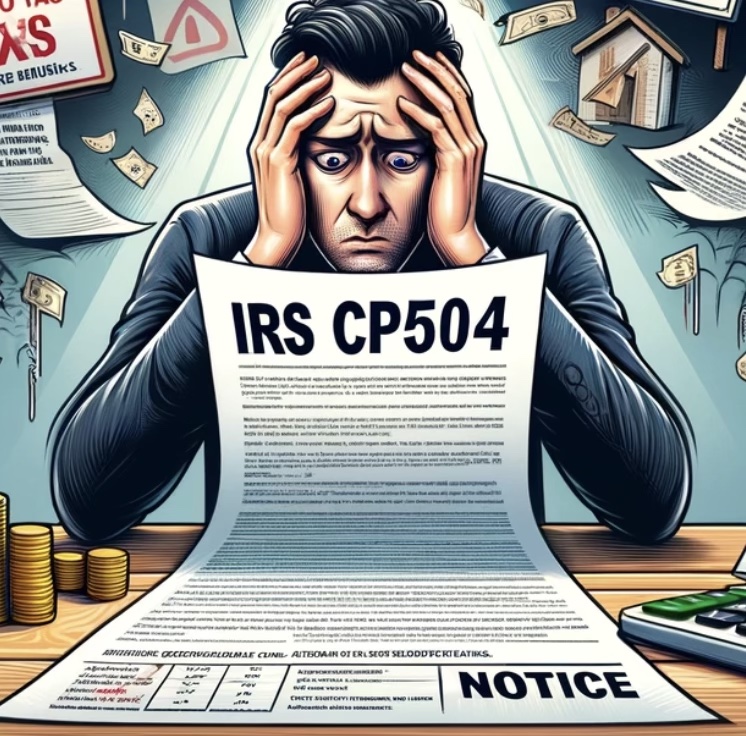- August 27, 2023
- Posted by: detaxify

Introduction
Facing IRS communications can be daunting, particularly when encountering an IRS CP504 Notice. This comprehensive guide aims to demystify the CP504 Notice, detailing its implications, and providing actionable advice to effectively address it. Grasping the essence of this notice is crucial for navigating tax issues and steering towards resolution.
What Exactly is an IRS CP504 Notice?
An IRS CP504 Notice represents a critical communication from the Internal Revenue Service, indicating an imminent levy against your assets due to unpaid taxes. This notice is not just a reminder but a clear signal that the IRS is moving forward with actions to collect outstanding tax debts by potentially seizing property or other assets.
Why Did You Receive a CP504 Notice?
Receipt of a CP504 Notice typically stems from one of two scenarios:
- Unsettled Federal Taxes: This notice is likely the result of unresolved federal taxes, following unsuccessful attempts by the IRS to secure payment through previous notices.
- Disregarded Previous Notices: The IRS issues several notices before escalating to a CP504. Ignoring these attempts to communicate can lead to the serious step reflected in a CP504 Notice.
Essential Steps Upon Receiving a CP504 Notice
The arrival of a CP504 Notice demands immediate attention and action. Here’s how to approach it:
- Do Not Ignore: Dismissing this notice could lead to direct action from the IRS, including asset levying.
- Verify Notice Details: Carefully review the notice to confirm the accuracy of the tax debt, including any penalties and interest.
- Seek Professional Guidance: Engage with a tax professional—be it a Certified Public Accountant (CPA) or a tax attorney. Their expertise is invaluable in navigating your response, negotiating with the IRS, and exploring avenues to avert asset seizure.
- Consider Payment Arrangements: If full immediate payment is unfeasible, explore setting up a payment plan with the IRS. This approach can prevent asset seizure while you work towards settling your tax debt.
- Explore an Offer in Compromise (OIC): You might be eligible for an OIC, allowing you to settle your tax debt for less than the owed amount. This option requires professional assistance due to its complexity.
Conclusion
Receiving an IRS CP504 Notice signifies a critical juncture in your tax resolution journey. Ignoring it is not a viable option. Promptly reviewing your situation, consulting with professionals, and taking decisive action can safeguard your assets and financial future. Begin today by addressing your tax concerns head-on, leveraging this guide as your roadmap to resolution.

